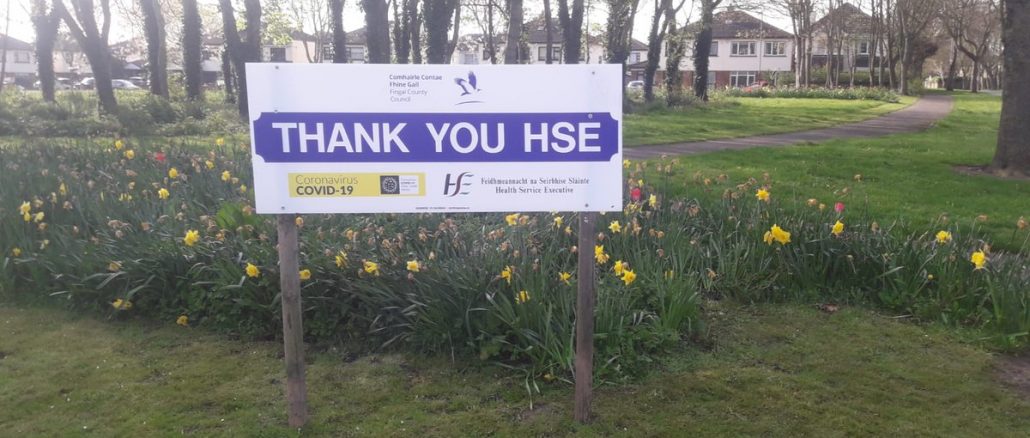
I still remember the stifling uncertainty I felt the morning after my operation. The monitors whizzed, my back ached and the nurses in their clinical facades brushed by.
Despite my disarray, there was one thing I was certain of; the two-year wait for my scoliosis treatment was over. I relished the thought of knowing that the barriers I faced in light of my condition were no longer the source of my worries.
I was 16 at the time, and up until that point, I had felt no more than a stifled voice on a conveyor belt of hospital waiting lists.
Sadly, this is not the case for the 194 children that are currently waiting for spinal-related surgery across Our Lady’s Children’s Hospital Crumlin, Temple Street Children’s University Hospital, and the National Orthopaedic Hospital Cappagh, according to Children’s Health Ireland (CHI).
Some 123 of those are awaiting spinal fusion, while 71 are awaiting other spinal procedures.
Scoliosis is an orthopaedic condition in which children develop a curvature in their spine during growth spurts or just before puberty.
While some cases only require close monitoring or the use of a back brace, severe cases require spinal correctional surgery. Early diagnosis and a timely operation are essential to prevent the condition from deteriorating.
In 2017, the HSE released their Action Plan for Scoliosis to ensure no patient would be waiting longer than four months for scoliosis surgery.
Following this in 2018, CHI was provided with €9 million in funding to address paediatric orthopaedic waiting lists which included scoliosis services, in line with the HSE National Service Plan.
This increase in support enabled a 13 per cent rise in scoliosis procedures in 2018, compared to the former year’s activity, while it also witnessed a reduction in overall orthopaedic outpatient waiting lists.
At the time, this was the answer to the prayers of worry-ridden parents and their brave children who had up until that point been shouting into the abyss, pleading for their needs to be met.
Yet, here we are, four years later, tethered to the promises of yesterday, and watching them slip further away from our reach as children are back to waiting well over a year for the life-changing surgery, with some children waiting in excess of three years.
Data from the National Treatment Purchase Fund shows that orthopaedics currently has the longest waiting time for an appointment under the paediatrics umbrella.
CHI says it is working with the HSE to set up extra clinics in the evenings and at weekends, and to secure additional equipment for pre-operative assessments.
It has also indicated that it will be expanding its orthopaedic activity to Cappagh Hospital to reduce the waiting times for scoliosis procedures.
These developments certainly offer a glimmer of hope for scoliosis patients. The latest CHI figures show just 15 patients waiting for spinal fusion at Cappagh and none there waiting for other spinal procedures, compared with 85 and 36 waiting respectively at Crumlin.
While Covid-19 has changed how we live, and has affected the general running of hospitals and plunged them under pressure, children are still waiting and their condition has not gone away at the foot of global pandemic.
Mountains have been moved over the course of this pandemic; this should be one of those mountains.
The pandemic has shown the long-standing cracks in our health system; one of those cracks being the 500 permanent consultant posts that are currently either vacant or filled on a temporary basis in our acute public hospitals, according to Irish Hospital Consultants Association.
The last few months have shown the effects of these vacant positions in deafening spades. No amount of funding invested in these services will reduce the waiting lists. The recruitment and retention of full-time specialists is the application that should be delivered.
This is especially relevant as the Dáil Public Accounts Committee was recently told that the new children’s hospital at St. James’s may not open until 2024. If we can’t fill the existing permanent positions, how can we expect to staff a new world-class facility?
Equally, there is a resounding need for the reintroduction of a nation-wide school-screening programme to ensure early detection of the condition.
This screening programme was disbanded in 2008 and was due to be reviewed in the Action Plan for Scoliosis in 2017, yet little progress has been made in the area since.
Understandably, this is no easy feat. However, it is one that will ensure scoliosis patients are not forced back into the uncomfortable confines of unheard voices falling on deaf ears.
Their needs deserve to be met, their voices deserve to be heard.
Trudy Feenane
Image credit: Twitter Fingal County Council



